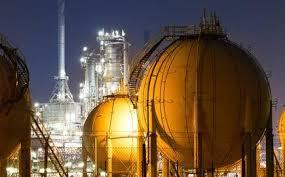Natural Gas Storage Market Overview: Strategic Importance in Balancing Energy Supply During High Demand Seasonal Peaks

Natural gas storage plays a critical role in ensuring energy security, market stability, and efficient supply chain management. As global energy demands shift toward cleaner and more reliable sources, the importance of natural gas—and the systems that store it—continues to grow.
What is Natural Gas Storage?
Natural gas storage involves holding natural gas in various facilities for future use. These facilities can balance supply and demand fluctuations, support energy grid stability, and ensure uninterrupted delivery during seasonal or unexpected demand surges. Storage systems are especially critical in winter, when residential and industrial usage spikes due to heating needs.
The three primary types of storage facilities include:
-
Underground Storage: The most common form, involving depleted oil and gas fields, aquifers, and salt caverns.
-
Liquefied Natural Gas (LNG) Storage: Involves storing gas in liquid form at extremely low temperatures in specialized cryogenic tanks.
-
Above-ground Storage: Less common and typically used for short-term or immediate supply needs.
Market Drivers
Several factors are driving the growth of the natural gas storage market:
-
Rising Global Energy Demand: As economies grow, particularly in Asia-Pacific and the Middle East, the demand for energy, especially natural gas, has increased substantially.
-
Renewable Integration: Natural gas is often used to balance intermittent renewable sources like solar and wind. Efficient storage helps smoothen supply during low renewable output.
-
Geopolitical Tensions: Conflicts affecting gas supply routes (e.g., in Europe or the Middle East) highlight the need for robust domestic storage systems.
-
Seasonal Variations: Countries in colder climates require increased storage to meet winter heating demand.
-
Energy Transition Goals: Governments are promoting gas as a bridge fuel, encouraging investments in related infrastructure, including storage.
Market Challenges
Despite the positive outlook, the market faces certain challenges:
-
High Capital Costs: Developing underground and LNG storage infrastructure is capital-intensive, requiring long-term planning and significant investment.
-
Environmental Regulations: Stricter environmental policies can delay permitting processes or limit expansion efforts.
-
Aging Infrastructure: Many existing storage facilities, particularly in developed regions, require upgrades or replacements to ensure efficiency and safety.
Regional Analysis
-
North America: The U.S. leads with one of the largest underground storage capacities in the world. Its shale gas revolution and growing LNG exports have spurred infrastructure expansion.
-
Europe: The continent has prioritized storage due to its dependency on external gas suppliers like Russia. Storage facilities are viewed as strategic assets, especially after supply disruptions.
-
Asia-Pacific: Rapid industrialization, urbanization, and energy diversification policies in countries like China and India are driving the storage market.
-
Middle East & Africa: While traditionally gas exporters, these regions are now investing in domestic storage to support power generation and industrial needs.
Technological Advancements
Advancements in monitoring systems, automation, and AI are improving storage efficiency and safety. Enhanced storage management software allows operators to optimize injection and withdrawal cycles, forecast demand more accurately, and maintain regulatory compliance.
Furthermore, innovations in LNG storage—such as modular LNG tanks and improved insulation materials—are making LNG a more flexible and scalable storage solution for remote or off-grid applications.
Future Outlook
The global natural gas storage market is expected to grow steadily through 2030 and beyond, fueled by demand for energy reliability, decarbonization goals, and geopolitical dynamics. Investments in cleaner, more resilient energy infrastructure are likely to accelerate, with gas storage remaining a cornerstone of energy strategy.
Hybrid solutions that combine renewable energy with natural gas and battery storage are gaining interest, potentially reshaping the future of grid management.
- Art
- Causes
- Crafts
- Dance
- Drinks
- Film
- Fitness
- Food
- Games
- Gardening
- Health
- Home
- Literature
- Music
- Networking
- Other
- Party
- Religion
- Shopping
- Sports
- Theater
- Wellness


